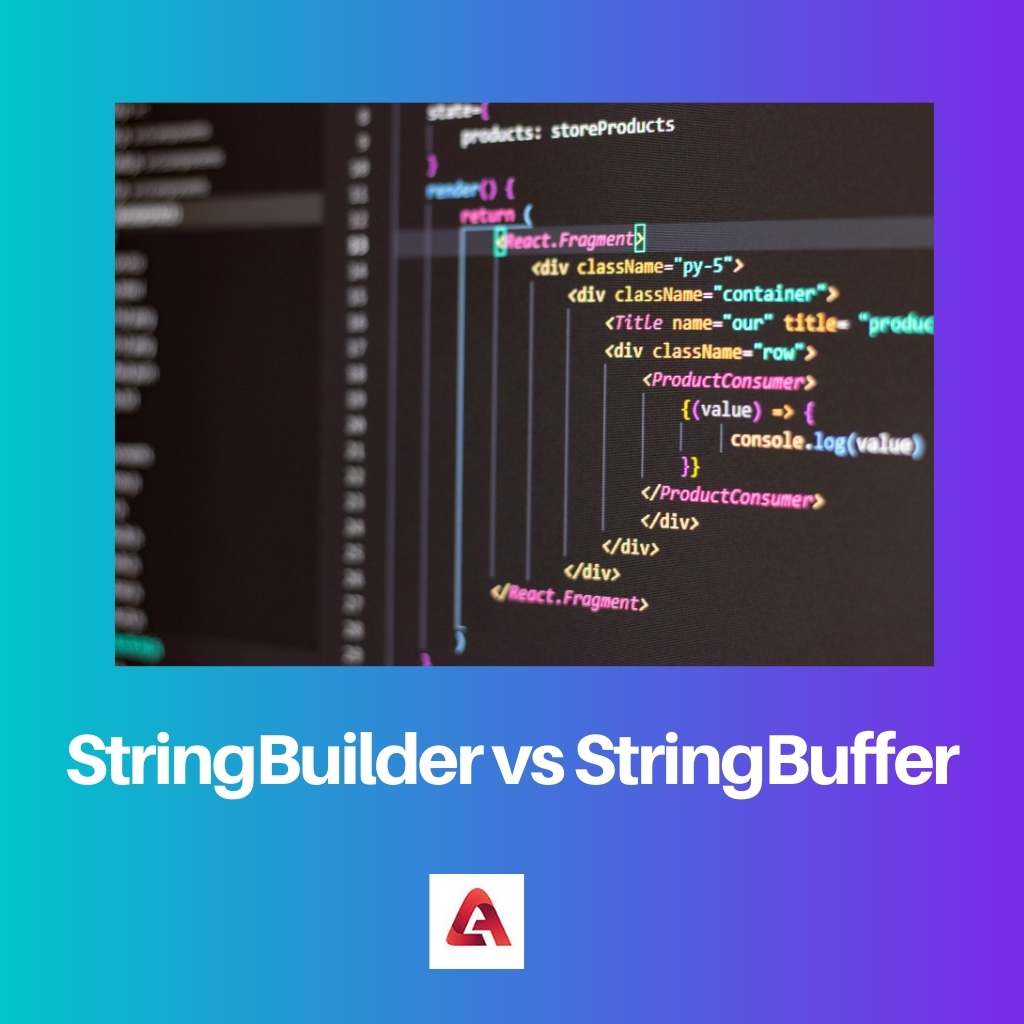StringBuilder is used to create a string where the user can make changes to the string during runtime.
StringBuffer comes from the words “string”, which means a sequence of characters, and “buffer”, which is a container for storing information. A StringBuffer can hold as many as the Java Virtual Machine (JVM) can support.
Key Takeaways
- StringBuilder and StringBuffer are both classes in Java used for manipulating strings.
- StringBuilder is faster but not thread-safe, making it suitable for single-threaded applications.
- StringBuffer is slower due to its synchronization feature but is thread-safe, making it ideal for multi-threaded applications.
StringBuilder vs StringBuffer
StringBuffer guarantees that multiple threads can access it safely and that multiple threads can modify it without leading to any data inconsistency. StringBuilder is not thread-safe, so it is unsuitable for multi-threaded environments.StringBuilder is the preferred option because it is faster.

StringBuilder is a handy class that’s designed to create strings more easily. It’s used for things like creating messages, error messages and debugging info.
The class implements the following. The NET Framework Concatenate interface and has two constructors: one that takes a string array as an argument and one that takes arguments of type object.
A StringBuffer is a type of string that supports the addition and removal of characters in the middle of the buffer. It is a glorified array of characters with some additional functionality.
A programmer does not need to allocate memory for the string, nor does he/she need to worry about writing out the string at some point.
Comparison Table
| Parameters Of Comparison | StringBuilder | StringBuffer |
|---|---|---|
| Threaded safe | No | Yes |
| Synchronized | No | Yes |
| Model | Java 1.5 | Java 1.0 |
| Working | Fast | Slow |
| Performance | High | Low |
| Thread | Does not waits | Waits |
What is StringBuilder?
A StringBuilder is a construct that allows the developer to build a string (a sequence of characters) efficiently.
Similar to constructs like the StringBuilder class in C#, the JavaScript Array. The join () method, or the Java StringJoiner class, is used primarily to reduce memory allocation and garbage collection overhead.
A StringBuilder can replace most uses of the primitive String data type. The primary use case for a StringBuilder is when building a long string from multiple smaller strings; this avoids creating many small strings.
However, using a StringBuilder for concatenating strings that are all known at. The StringBuilder is not thread-safe.
Given how useful this class is, it’s surprising that it doesn’t have any properties or methods of its own to allow you to control the format of the resulting string.
A StringBuilder is a simple class that allows you to build strings easily. It’s like a snowball but with the ability to add text fragments at any location.
StringBuilder can be used to improve the performance of string concatenation operations. The StringBuilder class is not immutable, which means that this object can be modified by lower-level methods like Append(), Insert(), and Replace().
What is StringBuffer?
A StringBuffer can change, add, and remove characters from its buffer. String buffers are useful for tasks like copying a string into a file or converting it to uppercase.
They can be used to replace dynamic memory allocation and improve your code’s performance. A StringBuffer is a data structure that is used to store a sequence of characters.
StringBuffer comes from the words “string”, which means a sequence of characters, and “buffer”, which is a container for storing information. A StringBuffer can hold as many as the Java Virtual Machine (JVM) can support.
A StringBuffer is created with the constructor, a new StringBuffer(length). The length refers to the number of elements stored in the buffer, which needs to be indicated before constructing the object.
StringBuilder is from Java 1.5, but StringBuffer is from Java 1.0.
Given how useful this class is, it’s surprising that it doesn’t have any properties or methods of its own to allow you to control the format of the resulting string. StringBuffer works a little bit slower.
Main Differences Between StringBuilder and StringBuffer
- StringBuilder is not threaded safe, but StringBuffer is threaded safe.
- The StringBuilder is not synchronized, but the StringBuffer is synchronized.
- StringBuilder is from Java 1.5, but StringBuffer is from Java 1.0.
- The StringBuilder is faster than the StringBuffer.
- The performance is high in StringBuilder but low in StringBuffer.
- Threads do not wait in StringBuilder but wait in StringBuffer.

This is great, but I would like to know a bit more about the practical application of StringBuffer.
I’ve read better, it wasn’t a satisfactory read.
It is a very complete explanation about StringBuilder and StringBuffer, it’s greatly informative!
An interesting historical overview of the classes, I appreciated it.
This explanation is too basic, it didn’t help me understand the use of StringBuffer and StringBuilder.
I can see the clear advantages of using StringBuilder, it’s my preferred option for sure.